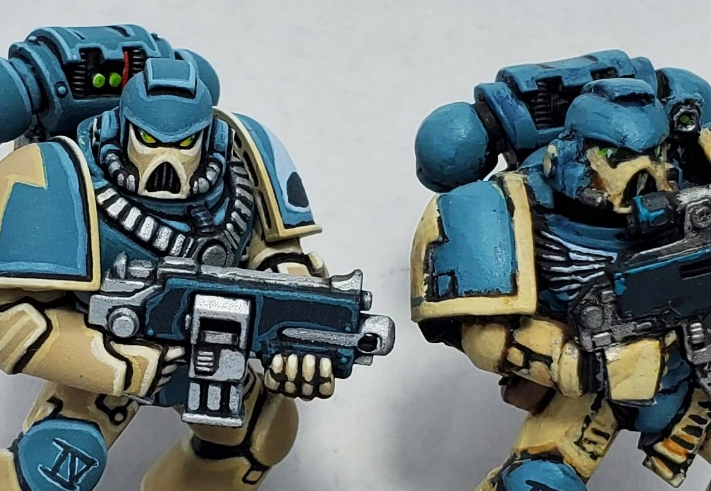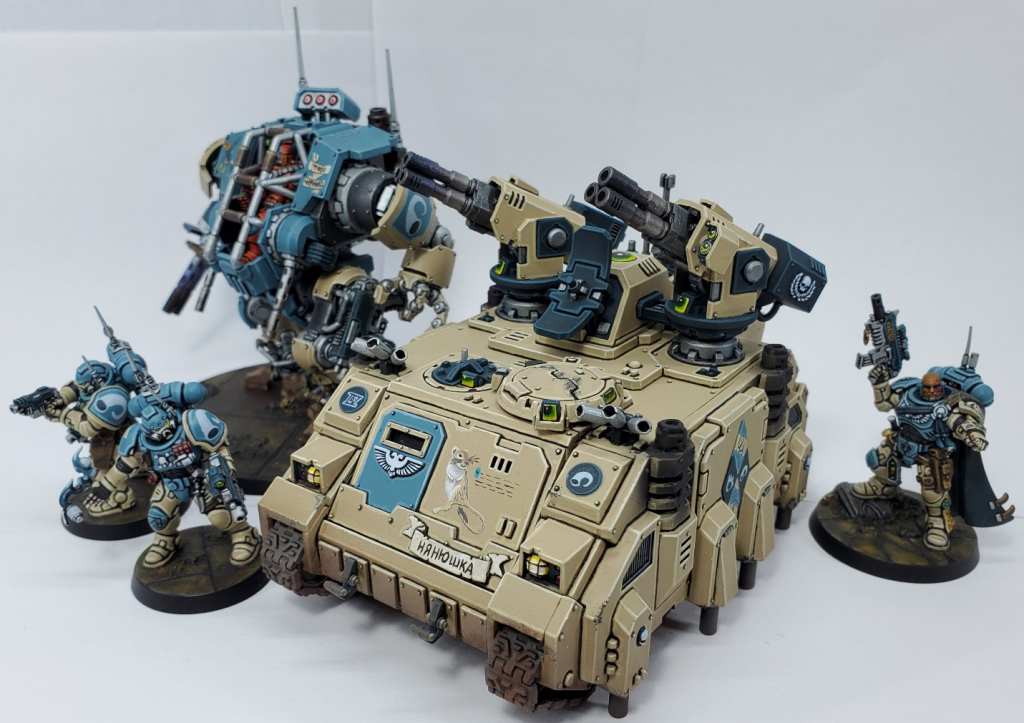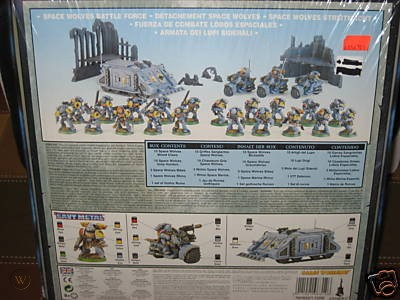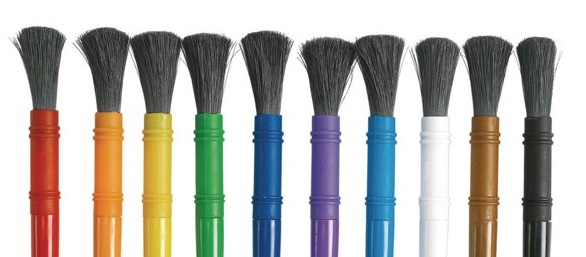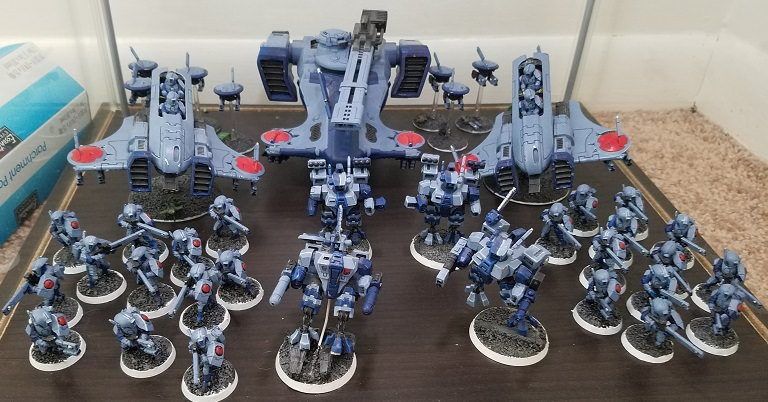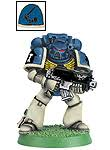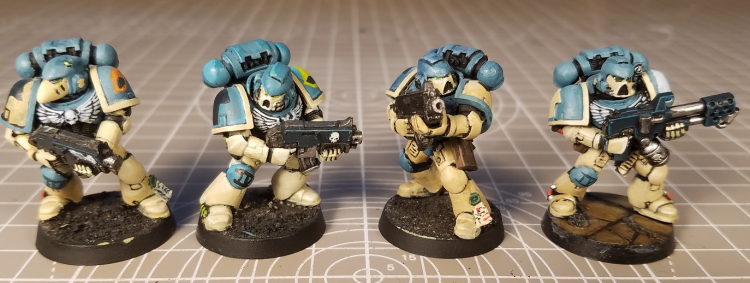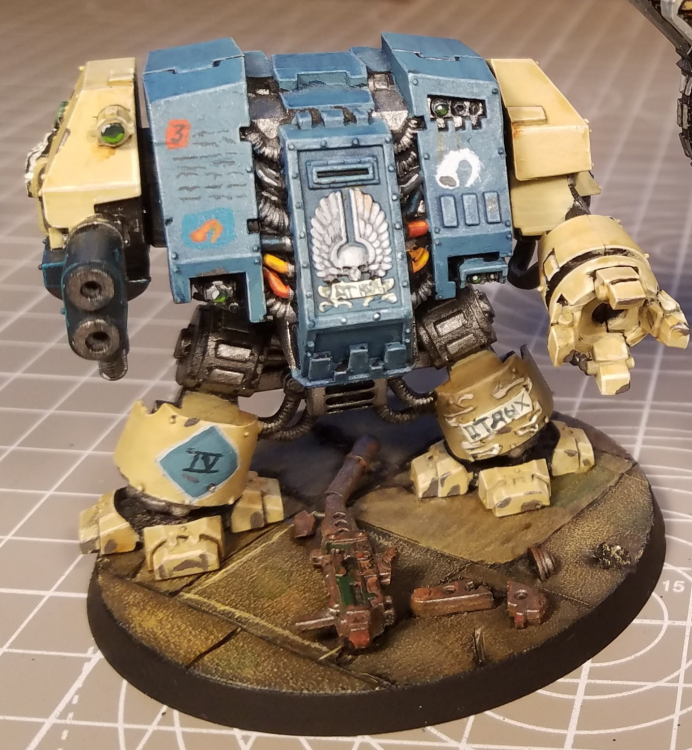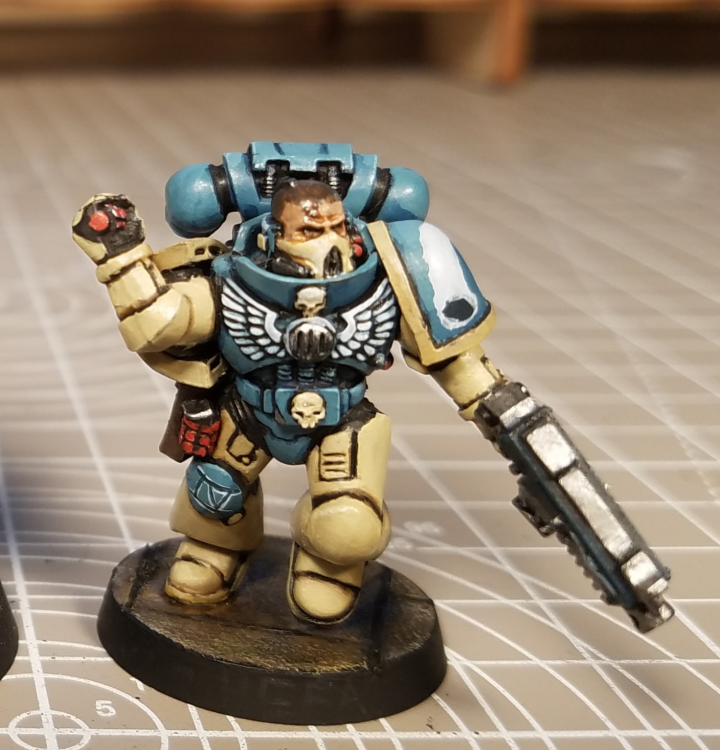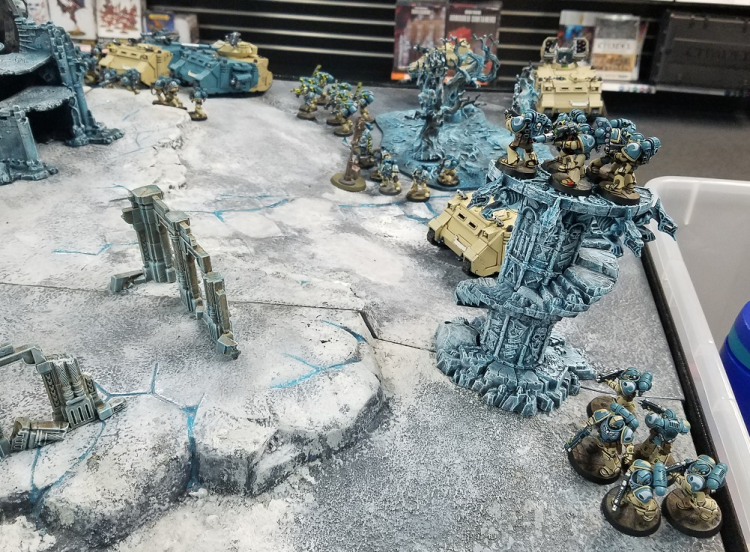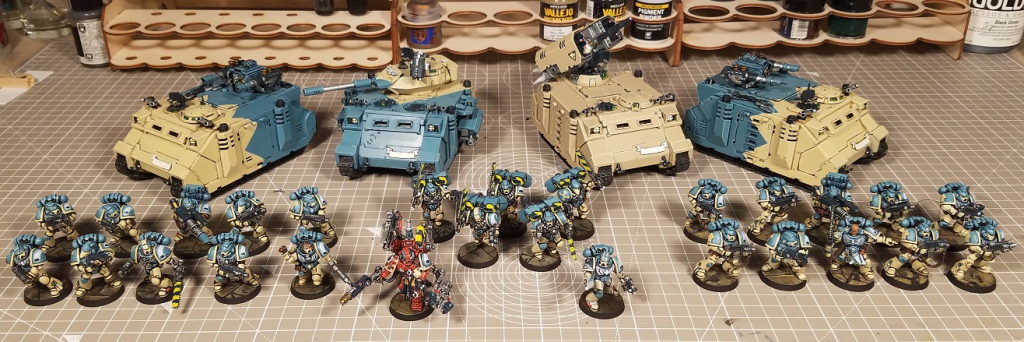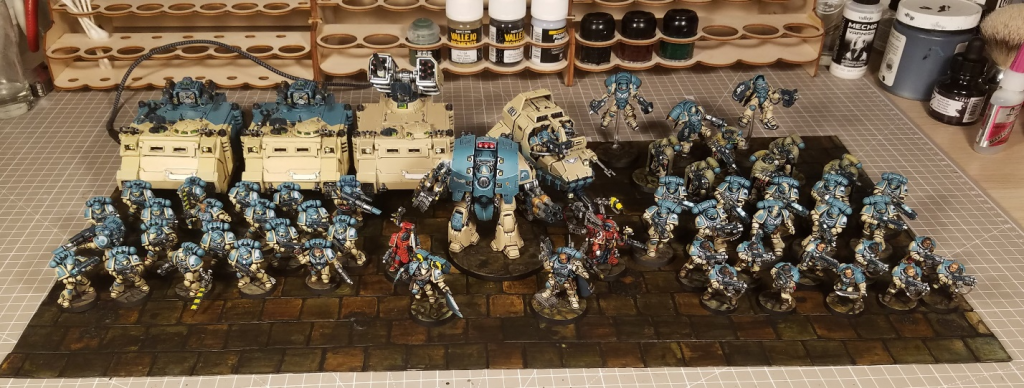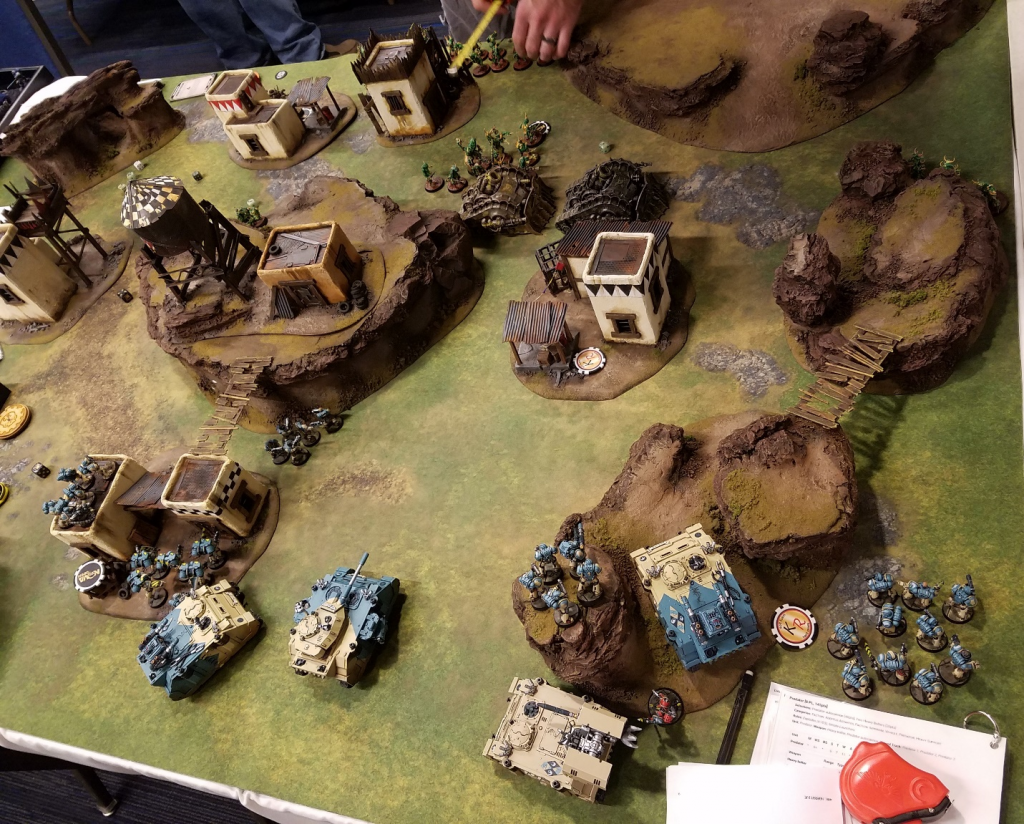I’ve been asked a few times to make an army showcase for my boys. This has been a pretty significant project I’ve worked on for a solid decade, so I wanted to put some work into it. I plan on a writing a second part in the near(ish) future going more in detail on the chapter’s fluff and the individual models.
Part 1: The Before Times
I first ran into 40k at a summer camp in 1998, where a friend had a few issues of White Dwarf. I was into D&D and playing battle scale games with models was something I had been curious about for a while. At the time I didn’t know anyone locally who played 40k. Mostly I read the very earliest battle reports on dialup internet and fantasized about having a painted army. I live in Cincinnati which, despite having iffy weather and few pastimes, did not have a very vibrant hobby community and essentially no painting community. Eventually I found a couple people at a local store and dove in with the original Space Wolves Battleforce, Ragnar, a standard bearer, and the third edition Space Wolves book. In retrospect I must have bought them right as the book released. I ordered them online in the late-summer 2000 and distinctly remember having to wait months for it to arrive. I spent at least two months coming home on the bus staring at my front stoop and being increasingly despondent, thinking it would never arrive.
This thing cost like $75
Finally, a month or two after school started they arrived and I built the entire box in a fury on the floor of our garage, not even making it inside the house. Every power weapon was used, mold lines were not scraped, nail clippers and Testor’s plastic cement were my only tools. It turned out the only person I knew at my school who played and painted was also one of my more persistent childhood bullies. He (mostly) calmed down when I found this out after seeing him at a Hobbytown playing a pickup game. I actually paid him about $30 to paint my Battleforce and he slapped a few base coats on them rather than stealing them somehow. I did paint some models, but I didn’t know what a primer was. All I had was a starter set of enamel paints, Walmart plastic-bristle brushes and a pot of space wolves gray. I wish I could find the first model I painted, it was a metal space wolves dreadnought and it looked worse than anything you’d imagine. I was proud of it. Heck, no primer meant you could leave the metal bits in the unpainted pewter for extra realism!
Pro tip: cut off all but 2 or 3 bristles and you have a fine-detail brush!
All through 8th grade and high school I would buy random boxes and Codexes, convince myself I was going to stick with that faction for real this time, maybe paint a model or two and get frustrated with the result and move on to the next thing. I never really graduated past the plastic brushes and crappy paint; I spent all my money on plastic. I only ever met one person who painted past the most basic level, and we lived too far apart to paint together. Online tutorials were basically the old White Dwarf style -where a forty step process would be shown as 4- and I was at a loss to learn anything that progressed me past goopy, blotchy messes. I got folks in the neighborhood to play. We never really knew the rules and there was a gentleman’s agreement that no one would buy the same faction. The only other person who stuck with it to any level was (surprise) the Ork player. I lost track of him in high school but by then he probably had a good couple thousand points that we had painted.
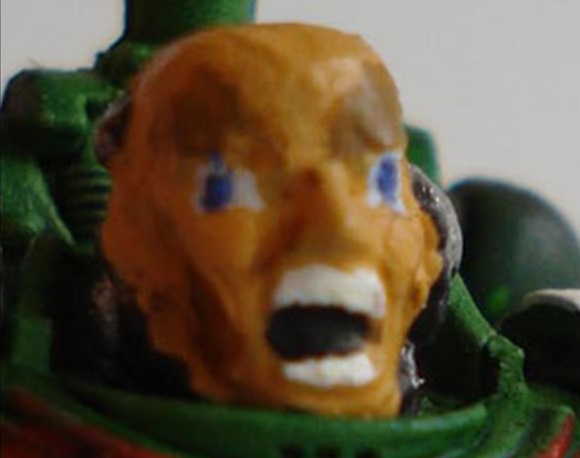
We dreamed of painting like this one day.
Although it was probably a placebo, the big thing that cracked my two-centimeter-high painting glass ceiling was P3 paint. I bought a set alongside some metal Karskins and some synthetic brushes in about 2003. I was really happy with the result, primarily because I primed and the P3 let me create a solid base layer. After that I painted a Tau battle Force, and a couple other Tau kits in roughly 2004 that turned out to a table-top standard. I still lived in a hobby desert and I still was, more or less, entirely self-taught when it came to painting.
First painted army to a passable standard, white base rims for Dan
Part 2: The Plan
Around 2007 I decided I wanted to stick with one army and paint it to a try-hard level. My end goal was an army that was cohesive, fleshed out, and at a standard that would not look out of place in a magazine or codex. Maybe it wouldn’t be to show quality, but approaching the level of the models GW paints to fill codexes. I was undecided on the army for a long time. I knew I wanted tanks and waffled for almost a year on whether I wanted to do Guard or Marines. The thing that eventually sold me on Marines was the various rhino chassis, particularly the Vindicator. I just love the obstinate, brutalist look of Marine vehicles.

The handsomest metal box of them all. Credit: EifertPosting
Since I had decided on a faction the next choice was scheme. I am a big fan of pastels and brighter colors for Marines, and knew I wanted to do something vibrant. This was back when army books were cheap enough it was no big deal to just buy every book as they release. I had every codex pretty much from third edition. I originally was eyeing the Aurora chapter as my favorite, alongside the Crimson Fists and Howling Griffons. I got as far as planning my paint purchases for the Aurora chapter before deciding that I didn’t want to do monochrome. I then settled on these guys:
Pretty sure it was the dude on the top that started it all
I knew I wanted to use P3 and was going to be relying of freehand for icons. I -thankfully- realized right away that the logo this chapter uses would be an unholy terror to paint. I also immediately wanted a more saturated tan. I decided on Jack Bone. I never really looked at a color wheel, but I figured that blue wouldn’t work with Jack Bone. I wanted something more turquoise, but also kind of a similar pastel. I found Troll Blood and it worked really well. I picked Coal Black for casings and Frostbite for an accent color. Finally, I made a nice, simple meteorite for my logo. I wanted something my freehand would be up for right away and I love the drop pod aesthetic. I painted up a few test models and got something I liked.
Mostly was undecided about the pauldrons
By this time, it was 2008; I had started studying Russian and decided that hey, Cyrillic looks cool. Leaning into the meteorite logo I called the Chapter “Ot Neba” (from above). I didn’t have much fluff, but I had an aesthetic and it worked.
Part 3: The Project
Around this time my Grandmother had a fence built and didn’t want to pay a contractor to paint it. I painted this fence for a few hundred bucks and, with some other savings, bought a mountain of plastic. I bought the assault on Black Reach box, some infantry, a bunch of tanks and a couple drop pods. I painted in sub-assemblies, so I used a brush-on black gesso.
I was a part of The Warhammer Forum, a UK based defunct message board that was much more hobby focused than anything I had access to otherwise, and workshopped a base with them. The first model I finished after my scheme was established was the Black Reach box dreadnought. Next was my first tactical squad.
I, uh, can see a few things I’d do differently now.
My early models had a solid scheme, but I didn’t really have a style to speak of. I did try to keep panel lines neat, and I had these blocky, blotchy gradients I added to the panels. I was going to college in Charleston by this point. The group there also lacked a hobby focus but was reasonably solid and played often. My store ran a painting contest and I figured I’d paint a single tactical marine to the best of my ability, rather than batch painting in batches of 3 or 5. This was my first leap in quality of the project.
I bought some sable brushes made a home-made wet pallete and spent about 20 hours on this one model. I really leaned into the panel lining, developing an illustrative appearance I liked. I still did the gradients on panels, but also made sure every detail was panel-lined starkly. I wanted the model to look like a panel in a comic book or a still from a render, rather than a photograph. This really worked with the scheme I had and was within my ability to accomplish and improve upon. It’s not a perfect equal of the more recent stuff, but it doesn’t look completely out of place. I was thrilled with the result and from that model forward I drastically increased the time investment in each individual model.
Not on par with my current stuff, but definitely a big improvement.
By 2010 I had painted a razorback, a captain, two tactical squads, a scout squad (five man), a drop pod, nine assault marines, and a dreadnought. I was able to play in small games with entirely painted armies. I had also increased my plastic mountain, with a couple of land speeders, an ironclad, a devastator squad. Mostly I had bought these to support the game store, as I was still way behind the eight ball.
Part 4: Hiatus
By 2010 I had graduated college. I always wanted to travel, and in 2011 I started teaching abroad. First I went to the Republic of Georgia and stayed in a tiny mountain village with no running water. After that I taught in Korea for three years. The hobby didn’t follow me – I left my things at my Parents’ place and by the time I came back I had no interest in restarting – I had a shitty job to focus on and from 2014 to 2016. So I was back in the states but I wasn’t picking up where I’d left off.
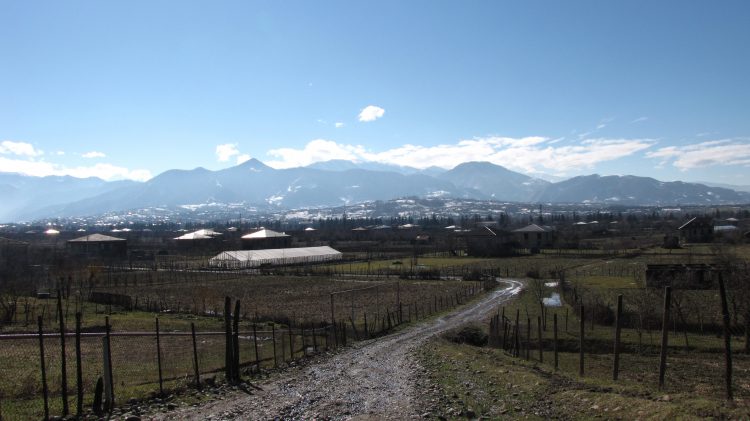
Dimi, Georgia: Spot the hobby store
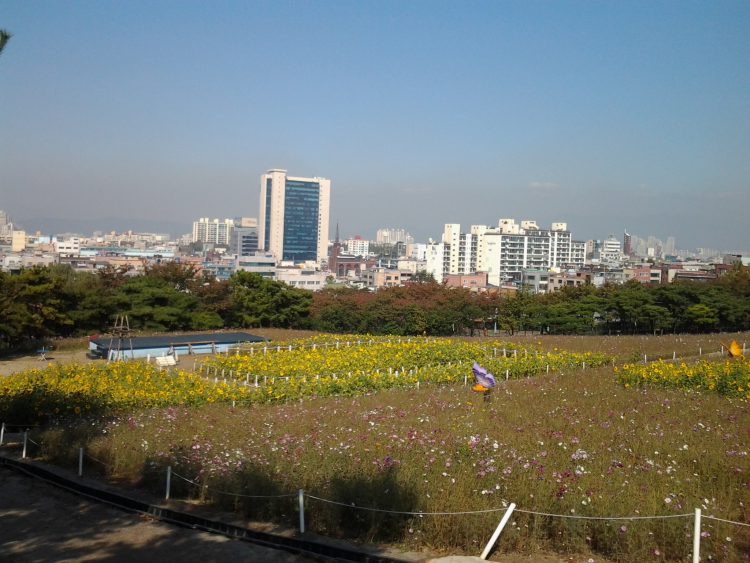
Gumi, Korea: Surprisingly no hobby store
Two things can be credited with getting me back into the hobby. First is my fascination with a good train wreck. GW blowing up the old world and telling people to pretend to ride horses, ironically, re-engaged me. I really enjoyed laughing at how clueless they were behaving. I was following the SomethingAwful thread on Warhammer 40k and eventually people went from talking about how garbage Kirby was to saying gasp nice things about GW.
I started listening to a couple of the podcasts made by thread posters; first the Independent Characters; then some jerks named Dan and Campbell made a podcast. They reminded me how much I loved the over-the-top silliness of the 40k mythos and them talking about their communities and gaming circle reminded me how much I had wanted to find something like that. The Badcast by far did the most to bring me back in. It was also late 2017 and I needed a distraction badly.
So I figured I would just look at my old collection and see how the paint held up. This is the other big thing that cot me back in: P3 paint is indestructible. Almost 8 years without so much as a shake and every pot was still perfect. All I used from GW was washes (which held up) and metallics (which were hockey pucks). The brushes, the gesso, the paint, the models – painted and unpainted- were all pristine. Literally all I needed to buy to get back in were a couple of bottles of paint. That did it, I was back in.
Part 5: Post-Korea
I decided to restart the same way I began the project. I pulled out the Ironclad kit, built it and primed it. This was my next big leap. I ditched the “gradients” and focused more on edge highlighting. I was worried I would have forgotten everything, but it painted up quickly and cleanly. I really enjoyed myself and wrote up a quick 2,000 point list that used some existing models and wouldn’t require many purchases. At this point Primaris were around, but I didn’t have any interest in them. The plan was all small marines.
I decided to break out an airbrush; one I had owned since literally the start of this project but had been too cowardly to use. I primed the tanks I had owned since the beginning and basecoated them. I painted up the second razorback, some lascannon marines and a standard bearer. I converted and painted a techmarine, a Lieutenant and a predator.
My first 8th edition game, this is a little farther in the time-line.
It was about this point where I got tempted into the Primaris stuff. I bought the Dark Imperium boxed set primarily for the rulebook (lies we tell ourselves) and eventually painted a test model. While I am firmly in the “I wish they had scaled up the existing stuff” camp, it was a joy to paint. I adjusted my list and set a goal of having 2k points painted by Nova 2019. By this point I had a process and a plan and stuff was coming together quickly. I had finally set up a dedicated painting space and this massively sped my progress up. I had an established scheme that I could basically do in my sleep and from this point forward it was all just making the end result cleaner and cleaner.
1000 point Nova list
2000 points
Nova action shot
I had met my goals by Nova ’19. Then I came down with a bug that prevented me from playing more than my first few games – right after playing a Nurgle army actually – but I had a blast in the games I did play. In 2020 after Indomitus released and I decided I wanted to focus on my small marines.
My goal currently is to have a small marine army painted to my best standard and I plan on making sure all the units and vehicles I’ve wanted at some point exist in my collection before they get squatted. Currently I’m working on some tactical marines, which seem like a good coda to this story so far, as they are a bit different from what I did back in 2009 when I started. I expect I’ll be done with my small marines by 2022 and wrapping up the Biglies by 2024.
Slight improvements
Part 6: What to Take Away
If I look back at my hobby journey there are definitely a few major takeaways I would say apply to all newcomers to the hobby who want to do more than just play with unprimed models.
Every older painter says this, but if you’re just getting started you have no idea how much you can gain on someone like me by having access to all the painting guides on social media. Watch several content creators of different skill levels; try and take something away from all of them. You shouldn’t ever be discouraged by a lack of perceived progress. In my experience it’s often a case of beating your head against a wall until suddenly a technique clicks and you jump forward.
If your intent is to hobby, and not just to play games, force yourself to spend a significant portion of your budget on hobby supplies and tools. When I was young I’d just buy plastic and make do with bargain basement paints and brushes. I never felt invested in finished models. Even if I did actually paint anything, which was rare, they’d end up lost or discarded.
Make a dedicated space and maintain it. Things get lost so easily. I’d love to find my old models somewhere, but I expect they got thrown away piecemeal over the years. Having a space that you don’t need to set up and put away makes such a difference in time, it’s really impossible to exaggerate how much you’ll benefit from setting aside as much space as you can.
Finally, don’t be afraid of an airbrush if you have one. I had an airbrush for literally years before I broke it out, which is so stupid. I’ve ruined dozens of models with a rattle can. I’m sure it’s hypothetically possible to ruin a model with an airbrush, but you’d have to try pretty hard.
Thanks for reading the first half of my army showcase. I intend on a second half showcasing the models and fluff of my homebrew chapter being posted shortly. One of my hobby bucket-list item is for someone else to paint one of my dudes, if you’d like to try the scheme please let me know, I’d love to see someone else’s approach.
Paint scheme tutorial: https://www.goonhammer.com/painting-them-tan-and-blue-boys-blacklined-power-armor/
Building a better work space: https://www.goonhammer.com/your-desk-sucks-making-a-better-workspace/
Have any questions or feedback? Drop us a note in the comments below or email us at contact@goonhammer.com.
